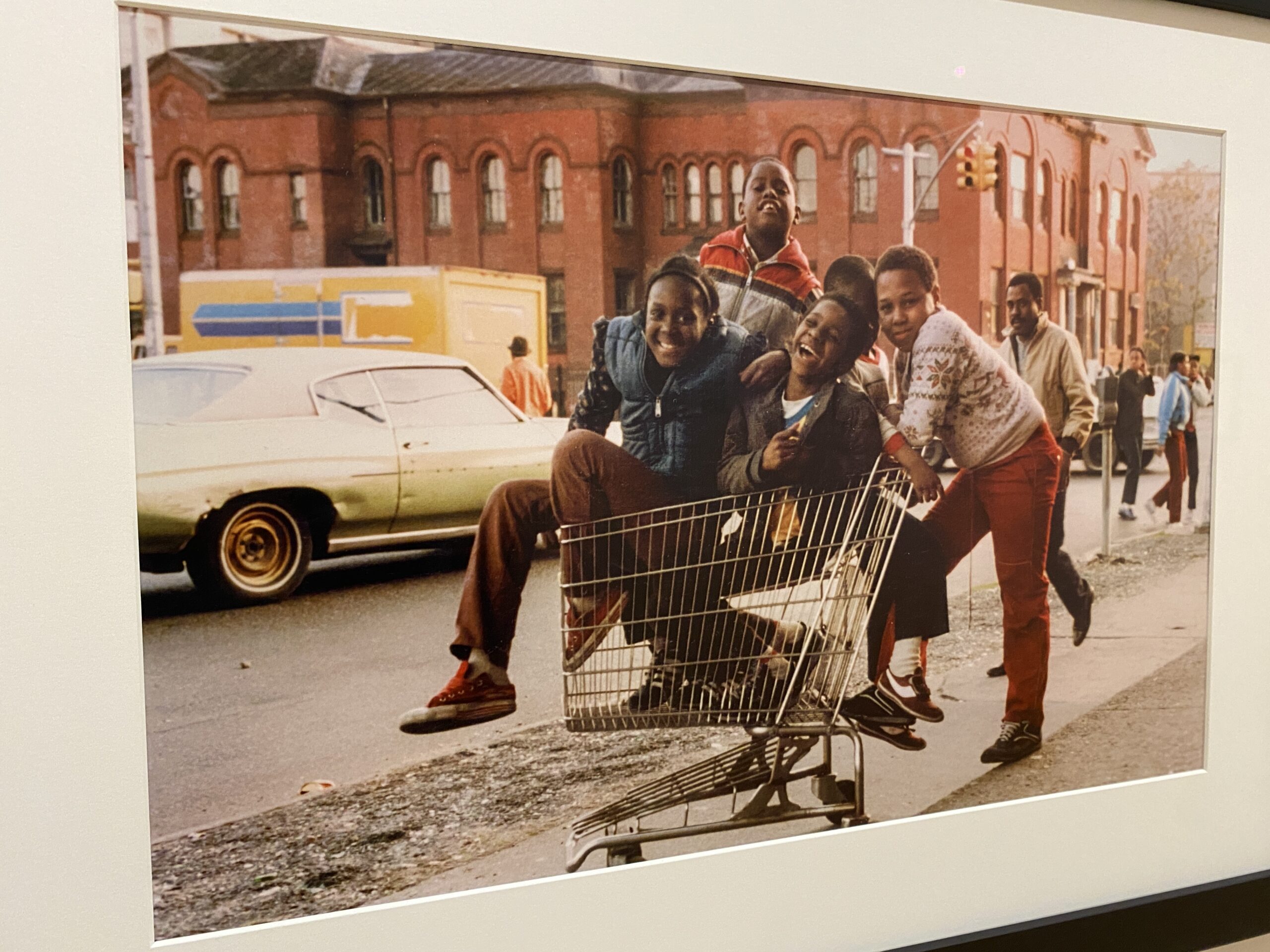A group of Black children are exultant as they cram into a shopping cart being wheeled down the streets of Brooklyn in 1980. This “Time of Innocence” photo is among the riveting images in the Bronx Museum of the Arts exhibition, “Jamel Shabazz: Eyes on the Street.”
The children are happily unaware that crimes such as homicide and robberies are mounting around them in a year The New York Times dubbed “the worst year of crime in city history.” They are just having a blast.
The exhibition, part of a year-long series of exhibitions and public programs celebrating the 50th anniversary of the museum, focuses on the theme that visibility is a tenet of social justice.
Visitors entering the exhibition hear a 2007 interview with Shabazz, a Brooklyn artist who used photography to document various aspects of life in New York City. His tales of life in the military, working at Rikers Island, and his passion and goal for photography serve as a beautiful precursor to the exhibit.
For the 62-year-old photographer, his photos have been presented at dozens of shows, such as the Brooklyn Museum, Victoria and Albert Museum and Adidas Photo Festival in Ethiopia. Shabazz is the author of 5 monographs and is working on a new book, titled “The Book of Life.” Volunteering and speaking to young people, Shabazz strives to inspire others with photography.
“[Photography] was like magic to me. It gave me a voice and a sense of purpose,” Shabazz says in the 2007 interview with the Bronx Museum Teen Council.

That magic is on full display as I enter the exhibit and travel back in time. Images dating back to the 1980s call for close inspection and testify to the Brooklyn-born Shabazz’s determination to document the whole range of New York life – the good and the bad.
The theme of innocence threads through the 40 years captured in the exhibit, from a mix of adults hanging out in Time Square in 1981, to children showing off their futuristic sunglasses in Brooklyn in 1980, to a kid playing the guitar in Manhattan in 2019.
Sharing the “time of innocence” title with the shopping cart photo are two images captured in Flatbush, also in 1980. Three young Black girls pose on the sidewalk, smiling. Another shows a young child sipping from a fire hydrant.
I take a deeper look into the photos and see the children’s happiness and smiles shine, perhaps oblivious to the crime and violence around them. However, the photos serve as a gentle reminder of the happiness that can exist, despite the societal conditions we face.
Other photos document people’s struggles. Alongside photos of innocence and happiness, there are protests, two children riding a subway car covered in graffiti, and a distressed older man crouched on a sidewalk in a piece titled “alone in the struggle.”
Another prevailing theme is family and community. I stop and do a double-take on a photo of two adult men playing checkers, one dressed in red with a red bandana and the other dressed in blue with a blue bandana. I think of the rival gangs – the Bloods and Crips — whose colors are worn by the men. Not knowing whether the affiliation colors were intentional or coincidental, I saw a message of civility and community, despite potential disagreements, problems, or issues.

I find myself smiling at other photos centering on family and community. From a father holding his child, to children hanging outside, to a group of older gentlemen riding their bikes.
One photo, in particular, continues to resonate days later. Titled “When Two Paths Cross” and set in Fort Greene, Brooklyn, in 2012, a Black and Jewish man share a bench and engage in conversation. It’s a perfect metaphor for the melting pot that is New York. While full of different cultures, races, religions, sexual orientations, genders and beliefs, we are able to respect our differences and cohesively live together.
I walk away better appreciating the reality of life in New York City – its beauty and joy, but also the struggles many residents face just making it to the next day. The lens of Jamel Shabazz has captured it all.
The free exhibit runs until September 4. The museum is at 1040 Grand Concourse. Tickets can be reserved here.

